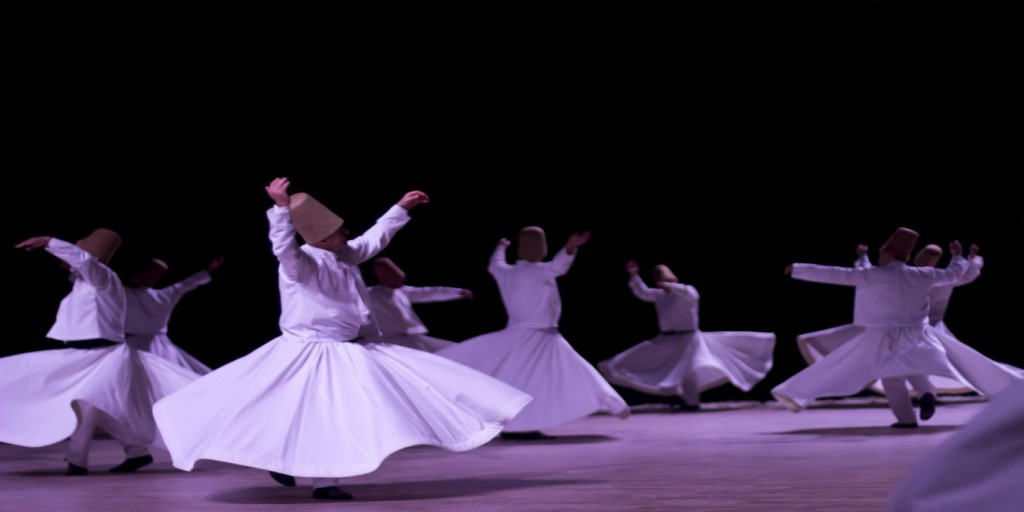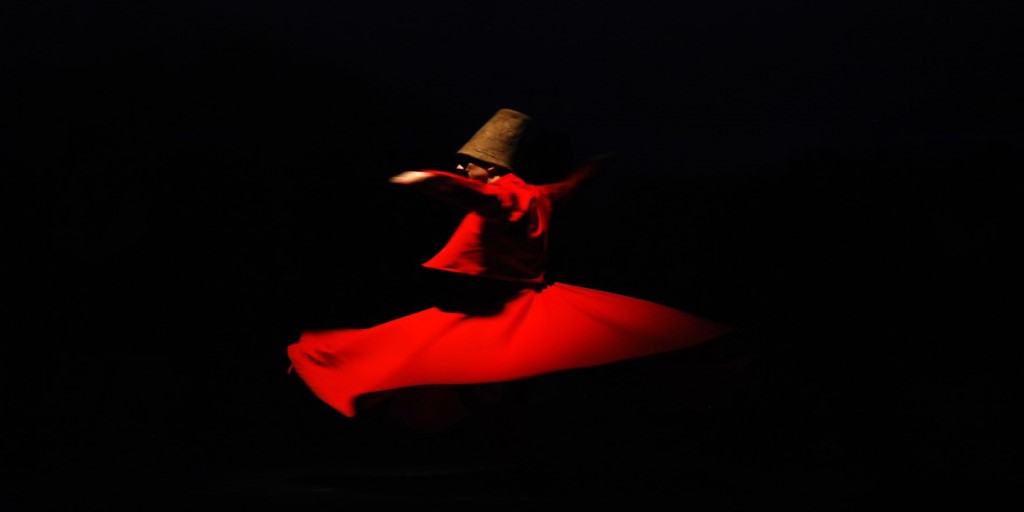Konya: Mevlana and the Center of Sufism
Mevlana Celaluddin is the great Anatolyan philosopher and mystic , poet and the ‘father’ of the Mevleni sect. Think Whirling Dervishes. The dance is called “Sema” which has formed part of Turkish culture, custom and history. Sema represents the mystical journey of man’s spiritual ascent by way of maximum and unlimited tolerance, love without
The Museum and Center of Sufism regard for race, color or creed, positive outlook , and service to “the whole of creation”. This spiritual maturity entails an acceptance of all religious beliefs in that all yearn for a common truth , for which reason Mevlana’s philosophy and doctrine appealed to men of all sects and creeds.

Each year in december, commemoration ceremonies are held in Konya, Turkey, for Jelaleddin Rumi (Mevlana), the great 13th-century Sufi (Islamic mystic) poet and founder of the Mevlevi (Whirling) Dervish order.
Rumi’s death in mid-December 1273 (called Şeb-i Aruz (SHEB-ee ah-ROOZ) is considered his “wedding night,” the night he departed this earthly life and was finally united in love with the Divine.
However, now Magnificent Travel & Events can make travel arrangements in Turkey for visitors coming to the commemoration ceremonies in Konya,
Magnificent Travel can also make any other Turkey travel arrangements you may need: flights, hotels, guides, tours, etc.
KONYA THE CITY OF RUMI
Konya is one of Turkey’s oldest continuously inhabited cities and was known as Iconium in Roman times. As the capital of the Seljuk Turks from the 12th to the 13th centuries, it ranks as one of the great cultural centres of Turkey.
Konya is one of Turkey’s oldest continuously inhabited cities and was known as Iconium in Roman times. As the capital of the Seljuk Turks from the 12th to the 13th centuries, it ranks as one of the great cultural centres of Turkey. During that period of cultural, political and religious growth, the mystic Mevlana Celaleddin-i Rumi founded a Sufi order known in the West as the Whirling Dervishes. The striking green-tiled mausoleum of Mevlana is Konya’s most famous building. Attached to the mausoleum, the former dervish seminary now serves as a museum housing manucripts of Mevlana’s works and various artefacts related to the mysticism of the sect. Every year during the first half of December, a ceremony is held in commemoration of Mevlana Celaleddin-i Rumi, with the controlled, trance-like turning or sema of the white-robed men creating a fascinating performance for the viewer.
The Alaeddin Mosque was built on the site of Konya’s old citadel dating from 1221 during the reign of the great Seljuk Sultan Alaeddin Keykubat, and today commands the Konya skyline. To one side of the mosque are the remains of the Seljuk Imperial Palace. The Karatay Madrasah, now a museum, displays bold and striking Seljuk ceramics. On the other side of the mosque, the İnce Minareli Madrasah of 1264 is remarkable for its marvellous baroque Seljuk portal. Other Seljuk works include the Sırçalı Madrasah and the Sahip Ata Complex. Visitors find Konya’s Archaeological Museum of exceptional interest. The collection of the Koyunoğlu Museum is a varied one, from natural history to old kilims. Within the museum complex, the restored İzzettin Koyunoğlu house illustrates the way of life of a prosperous Konya family of the last century.
Sille, 8km north of Konya, has the Byzantine Aya Eleni church and several rock chapels with frescoes. Akşehir, to the northwest, is thought to have been as the birthplace of the 13th- century humorist Nasreddin Hodja, whose mausoleum stands in the town. The 13th-century Ulu Mosque and the Altınkale Mescidi are other monuments worth seeing. The Sahip Ata Mausoleum has been converted into the town’s museum.
While a devout Muslim, Rumi advocated tolerance and was broadly accepting of other faiths as illustrated in one of his most famous verses:

Come, come, whoever you are, come.
Infidel, idolator, Wanderer, fire-worshipper, it doesn’t matter, come.
Ours is not a convent of despair.
Come, even if you have broken your vow a hundred times,
Come, come again
See a Whirling Dervish show
If you are in Istanbul, Cappadocia or Konya, it is possible to see a whirling dervish show. Just let us know the dates you want to attend and we will arrange the rest